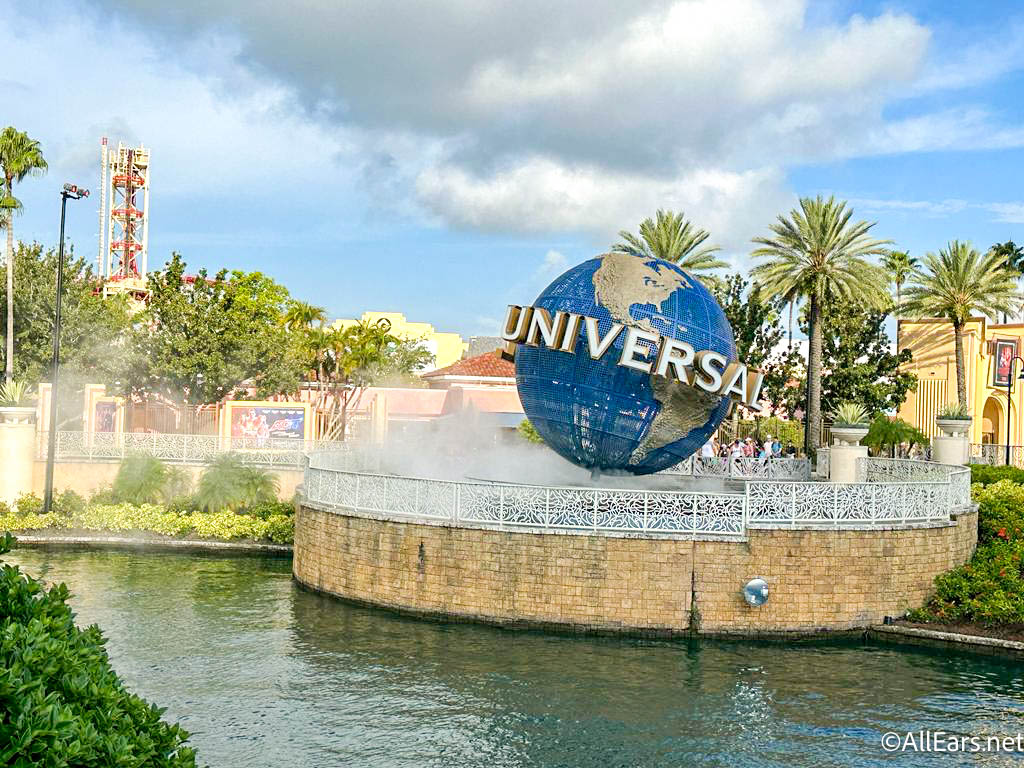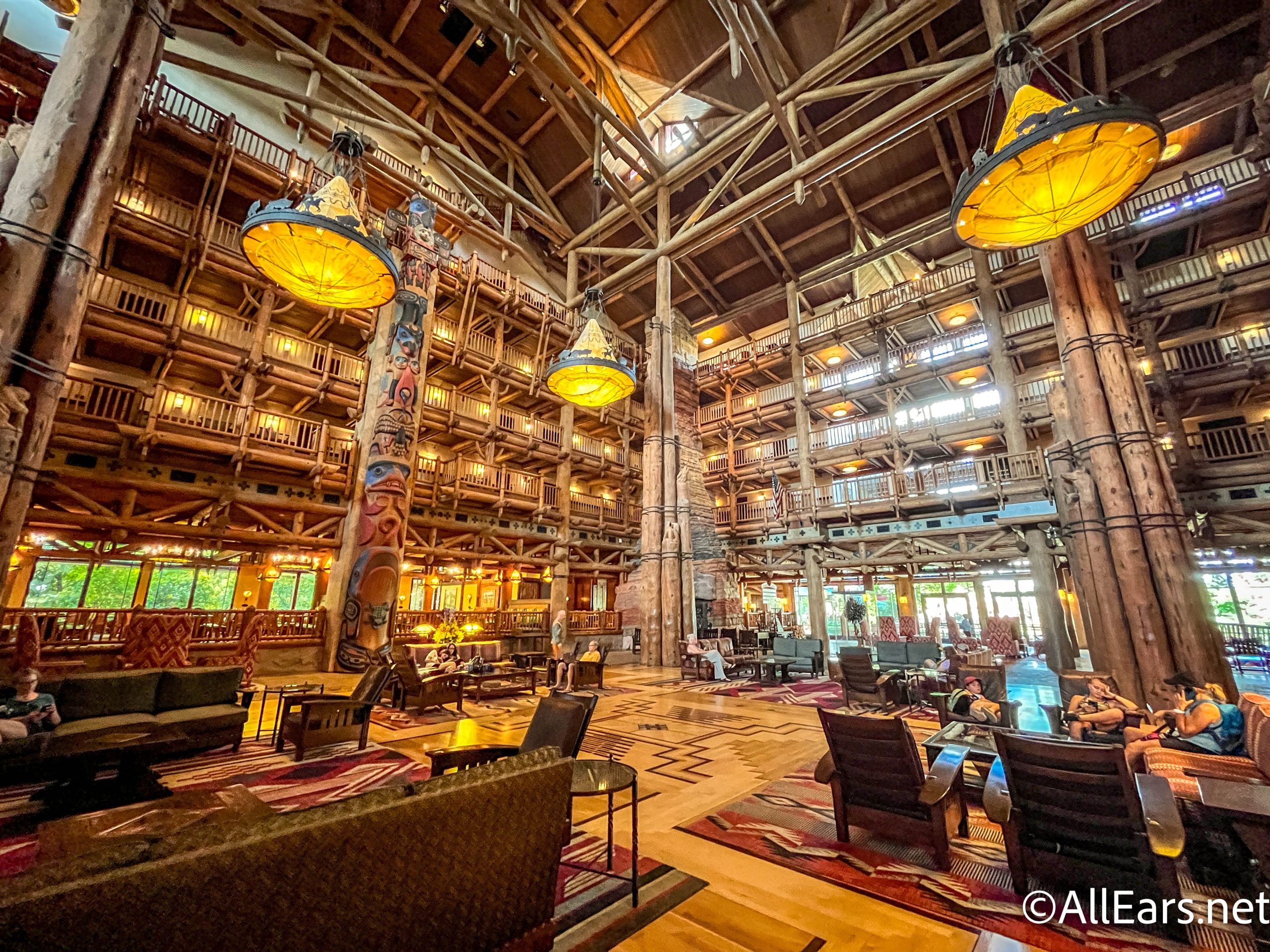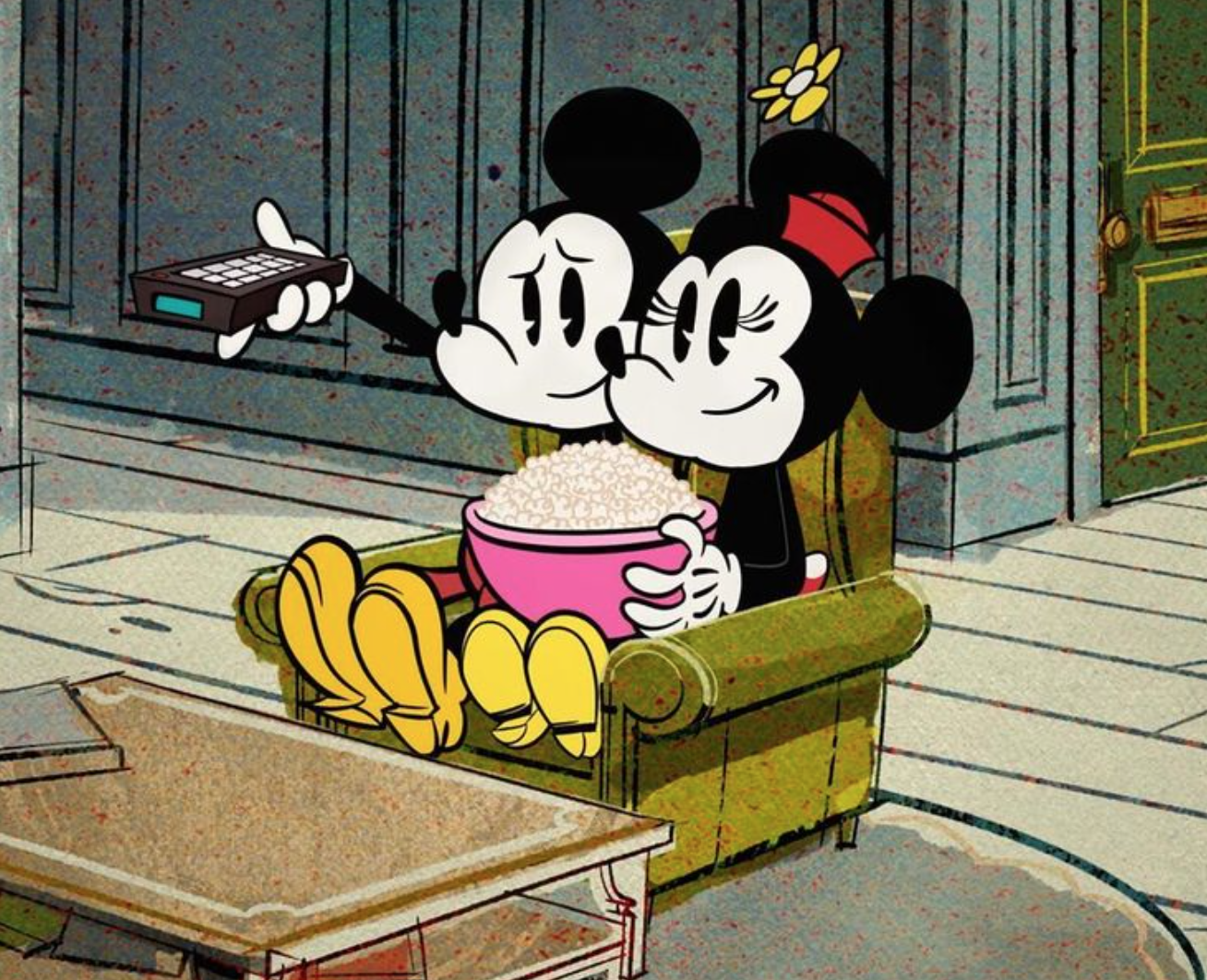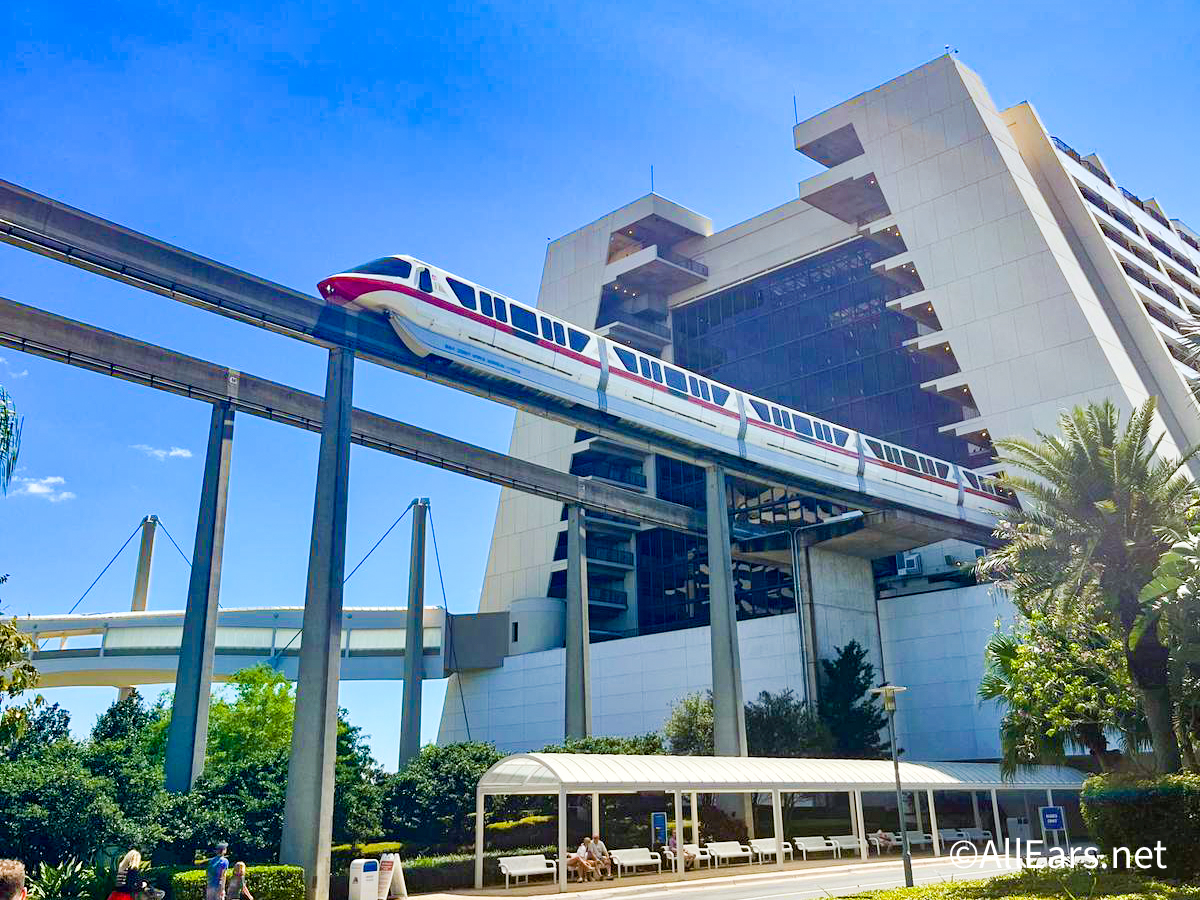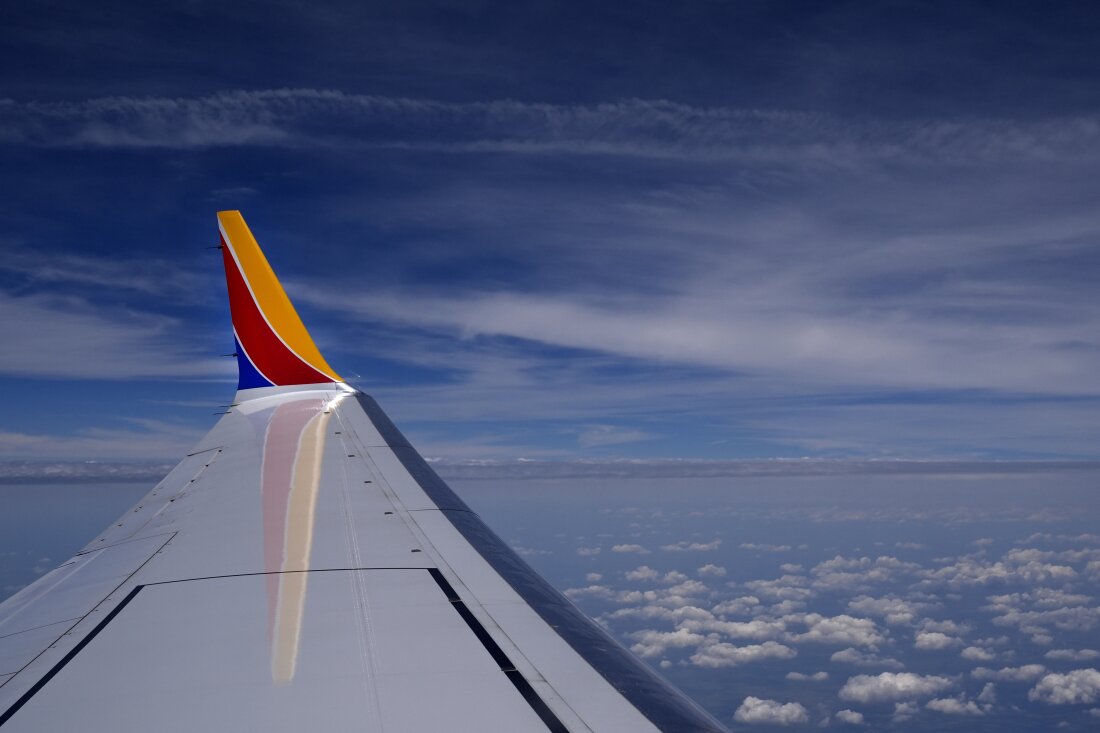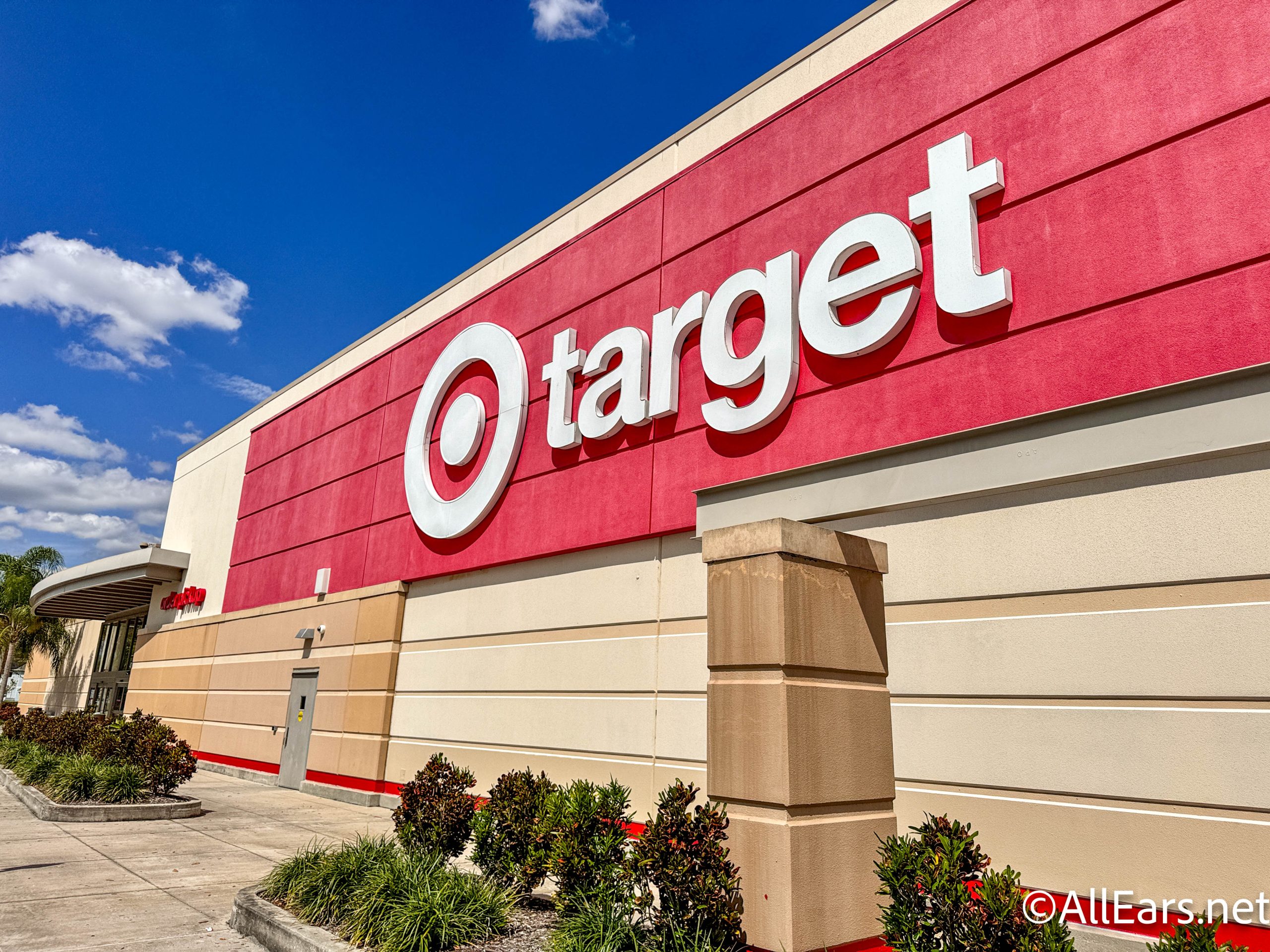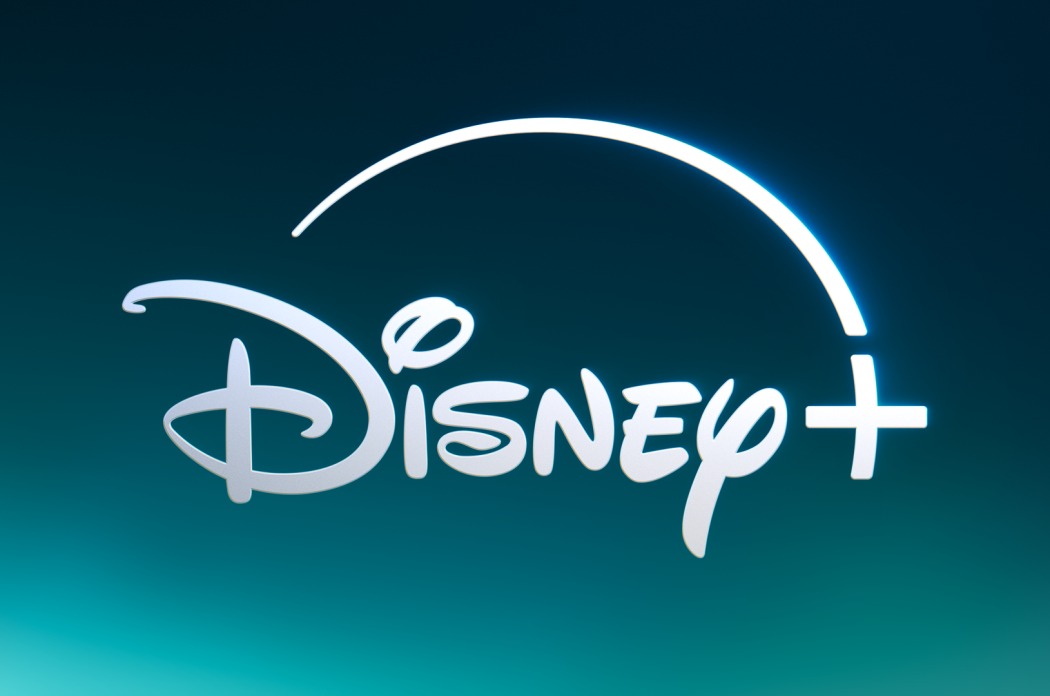The Significance of Steam Trains
by Jack Spence
AllEars® Feature Writer
Feature Article
This article appeared in the October 21, 2008 Issue #474 of AllEars® (ISSN: 1533-0753)
AUTHOR'S NOTE: The vast majority of the information presented here uses as its source the book "Walt Disney's Railroad Story" by Michael Broggie. This is an excellent book, not just for railroad buffs, but for anyone interested in the history of Disney theme parks. What I offer below just barely scratches the surface of what this remarkable book has to offer. I would highly recommend purchasing it. You can order it through AllEars.Net's Amazon store here: http://astore.amazon.com/debsunoffiwaltdi/detail/1563420090
We've all seen the television interview of Walt Disney, describing how the idea of Disneyland came to him. He recalls a day when he was sitting on a park bench, watching his daughters ride the merry-go-round, and thinking to himself that there should be someplace created where children and parents can play together.
This is a charming story, told by a charming man, and its telling has delighted viewers for years. But this is also the simplified account of how Disneyland came into being. As lovely as this legend is, there is far more behind the birth of Disneyland than this one defining moment — and steam trains played an essential part in the building of the Happiest Place on Earth.
From his earliest memories, Ward Kimball (an animator at the Disney Studios) had a passion for trains. In 1938, he and his wife Betty purchased a full-sized 1881 narrow-gauge Baldwin steam locomotive from the Nevada Central Railroad and spent a number of years restoring it to its former glory. He ran his prize in his own backyard.
In 1945, Ward was hosting a "steam-up" party for the local Live Steamers club and invited his boss, Walt Disney, to be the guest engineer for the event. Ward recounts that he never saw Walt smile more broadly than the moment when he pulled the throttle and the engine emerged from the roundhouse. By the time the party ended, Walt was hooked and railroading was in his veins.
In 1948, Walt discovered that another of his animators, Ollie Johnson, was also a railroad buff and was building a 1/12 scale live steam locomotive to be run in his backyard. Walt was fascinated with the idea and when the engine was completed, he visited Ollie's home numerous times to play with this intriguing new toy. As Walt's interest continued to grow, he searched for others interested in the hobby and after many inquiries eventually made the decision to build his own backyard railroad.
Of course, if he was going to build a locomotive, rolling stock, and tracks to run it on, he would need a suitable backyard. So on June 1, 1949, Walt and his wife Lilly bought five acres of land in Holmby Hills, a stylish subdivision located between Bel Air and Beverly Hills. Next, Walt turned to master draftsman, Eddie Sargeant, to help him develop a track layout for his new railroad. After several weeks of planning, Eddie came up with a design that squeezed 2,615 feet of track and 11 switches onto the property. Besides encompassing most of the back yard, Walt insisted that the train run completely around the house. At 1/8 scale, that was equivalent to eight miles of track.
Lillian Disney was a good sport, but she had her limits. She had selected a large section of the property for her flower beds and she did not want her husband's trains to run through the middle of this area. To appease his wife, Walt had a gag legal contract drawn up between himself, Lilly, and his two daughters, Diane and Sharon, giving him legal ownership and control of the railroad. And as an incentive for her to sign, Walt agreed to build a 90-foot tunnel under her proposed garden. With a sigh, Lilly acquiesced, put pen to paper, and the Carolwood Pacific Railroad was born.
Now that the right-of-way was secure, Walt needed to start construction on his locomotive. As modern and European engines did not appeal to him, he decided on a more ornate locomotive, the type that were used to build America. After much research he selected the Central Pacific 4-4-0 No. 173 for his prototype. This engine was in service primarily in Northern California between 1864 and 1909.
Just like with his company, Walt wanted to be involved in every aspect of his new hobby. Roger Broggie was a precision machinist at the studio, and under his watchful eye, Walt studied blueprints and learned how to operate machine tools. Over the months to come, Walt worked side by side with the studio mechanics and built a working locomotive completely from scratch. Nothing on it had been purchased "pre-built." To honor his ever-tolerant wife, Walt named his new engine the Lilly Belle. The total cost for his locomotive, rolling stock, and backyard layout came to $50,000. That's roughly $450,000 in today's dollars.
Walt normally insisted that his personal life be kept private. But word of his fantastic train layout spread and the Carolwood Pacific was the cover story for several railroad enthusiast periodicals. He even allowed Look magazine to write a feature article and photograph his backyard layout. These stories only fanned the flames of public interest and letters started to flow into the studio, asking for permission to visit his estate and the Carolwood Pacific Railroad.
With the public's interest in his train growing, Walt started to think about putting some kind of scale model train on the studio backlot for visitors to ride on the weekends. As his ideas grew, he thought about developing the land next to the studio and turning it into some sort of entertainment park. He remembered Ward Kimball's full-scale narrow-gauge railroad and the idea of owning his own "real" train took root.
In the winter of 1951, famed illustrator and railroad enthusiast Harper Goff was in London to purchase two 1/8 scale steam locomotives for his own layout. However, when he arrived at the shop, the clerk informed him that they had just recently been purchased by a famous American named Walt Disney. Dejected, Harper searched for Disney and found that he was staying at a nearby hotel. He arranged a meeting and desperately tried to convince Walt to sell him one of the engines. Walt declined, but invited Harper to dinner. As the evening progressed and the admiration between them grew, Walt shared his ideas for a park to be named "Walt Disney's America." Harper was intrigued and by the time dinner was over, he had joined Walt's exclusive team to help design The Secret Project.
Interestingly, the two engines that Walt had snatched from under Harper Goff's nose were badly damaged while being shipped home. Despite efforts by the studio mechanics to save them, they never did become operational. At the same time, storyboard illustrator Ken Anderson was working on another project. He was given the task of developing 24 miniature scenes depicting American folklore. Walt wanted Ken to study the technique of Norman Rockwell, as he felt this artist had a flare for storytelling and his illustrations appealed to Walt's midwestern upbringing and humor.
A 1/8 scale mockup of "Granny Kincaid's cabin" was completed and Walt planned to display this tableau and the others on a specially designed train. This traveling show would stop at railroad stations around the country and school children would be invited to experience a three-dimensional history lesson. Walt was very proud of this idea and was excited to show off his first prototype. But Roger Broggie did not share Walt's enthusiasm. He explained to Walt that the miniature scenes would be expensive to create and maintain. Also, the operation of a full scale train would be expensive and the show's capacity would be limited due to the narrow passageways in train cars. Bottom line, it would be very difficult to make money with this project.
Never one to give up on a good idea, Walt started to rethink the idea. Instead of displaying the miniatures on a train, why not create some sort of "Opera House" and share his tableaux with the guests that visited his studio?
In the spring of 1953 an incident happened that shook Walt greatly. It was a Sunday afternoon and as usual, Walt's backyard was full of invited friends and business associates. A guest engineer was at the throttle of the Lilly Belle and took a curve too fast. The train tipped over and broke the whistle off of the engine, releasing a jet of high pressure, invisible steam. One of the passengers, a 5-year-old girl, was unhurt by the derailment, but she ran through the jet of steam and received painful, although not serious, burns on her legs.
Walt was greatly upset by the incident. The idea that this little girl, or anyone else, could be hurt by something he had created was too much for him to bear. The next morning he had Roger Broggie drive out to his house, pick up the Lilly Belle, and store it at the studio. The rolling stock was put into the 90-foot tunnel for safekeeping and he halted work on a second engine that was under construction. Bob Gurr recalls that Walt would occasionally visit his beloved Lilly Belle and always touch it affectionately.
Even after this jolting incident, Walt was still interested in building a small park next to his studio and opening it to paid guests on the weekends. His plans called for a safer Carolwood Pacific Railroad to be part of his project. Harper Goff and Eddie Sargeant created plans for a 16-acre park that would include a 1/8 scale railroad, a circus tent, carousel, old west town with riverboat, Victorian village and picnic area.
But the land Disney wanted to develop was next to the Los Angeles River (a flood control channel) and the soon-to-be-built Ventura Freeway. Fighting "City Hall" to obtain the needed permits to utilize this land proved daunting and eventually Disney gave up. And by this time, his imagination had outgrown the 16 acres next to his studio.
The search was now on for a large piece of flat land, big enough to hold Walt's ever increasing ideas. Eventually, a spot was found in Anaheim and negotiations began with 17 families who owned contiguous parcels of land. In the end, Disney acquired 160 acres on which to build his new park Disneylandia, later to become Disneyland. Initial projections suggested that Disneyland would cost $11 million to build and first-year attendance would be between 2.5 – 3 million.
Even for a company the size of Disney, $11 million was a lot of money in 1953, so Walt turned to his financially savvy brother Roy for help. Roy immediately went to work and started negotiating with some New York investors. On Thursday, September 24, Roy received word that the investors wanted to meet with him the following week. Knowing that visual representations help sell a product, Roy told his brother that he needed some sort of rendering of Disneyland to present at his meetings. Since most of the ideas for the park were scribbled on scraps of paper and still in the minds of Walt and a select few, Walt called a friend and former employee of his, Herb Ryman.
Herbert "Herb" Dickens Ryman had previously worked with Walt on such projects as Pinocchio, Dumbo, and Fantasia. He was known for his talent in oils, pen & ink sketches, and especially watercolors. He had also been employed by Metro-Goldwyn-Mayer and 20th Century Fox and worked on a number of their movies.
After much cajoling, Herb finally agreed to draw the first interpretation of Disneyland. Herb listened carefully as Marvin Davis, Dick Irvine, and Walt explained their ideas. Eventually, Marvin and Dick removed themselves from the meeting and Herb and Walt spent the entire weekend alone, creating an overview drawing of Disneyland. At the entrance to the park was a Victorian train station with tracks that completely circled the many lands of Disneyland.
Roy took Herb Ryman's rendering to New York and met with executives of NBC and CBS. Both companies were interested in Disney films, but had no desire to invest in such a risky venture as a theme park. Then Roy turned his attention to the fledgling ABC network. After much persistence, Roy convinced Leonard Goldenson, head of the network, to invest $500,000 in the park plus loan guarantees for $4.5 million. In return, Disney gave ABC a 35% interest in Disneyland and agreed to produce a weekly one-hour television show.
On October 27, 1954, the "Disneyland" show premiered with Walt as its host. This made him a national celebrity and allowed him to "advertise" his new park as each episode revolved around one of the "lands" to be built at Disneyland. Both new footage and old movies and cartoons were used in production. The show was an instant success and ABC achieved top ratings. In 1960, Disney was able to buy back ABC's 35% ownership of Disneyland and in 1996, Disney purchased ABC outright.
To help promote Disneyland, the Lilly Belle was taken out of moth balls and returned to Walt's home. A number of Live Steamer club members and Kirk Douglas' family were invited to spend an afternoon playing with the Carolwood Pacific Railroad. The afternoon was casually filmed and some of the footage was eventually shown on one of the "Disneyland" television shows.
With financing secured, Walt announced that his new park would open in July 1955. Ground breaking occurred in August 1954, which only allowed an eleven month window for construction. Since this article is primarily about Walt and his trains, I'm going to concentrate on that aspect of the building of Disneyland.
As Walt's dreams grew, so did the size of his Disneyland railroad. Scaled down replicas simply wouldn't do in his new park. He searched several locations for existing locomotives, but ultimately decided to build his own, using his existing plans from the Lilly Belle. He ordered a large machine shop to be built at the studio behind the Ink & Paint department and construction was completed within 90 days. A staff was assembled and designs started to take shape. With the exception of the wheels and boilers, which were purchased from outside companies, the rest of the locomotive would be built at the studio and completed on-site at Disneyland.
After much tinkering, a 5/8 scale of actual size was ultimately decided on for the rolling stock and engines. To accommodate an engineer and fireman, the cab of the engines would be designed at 3/4 scale.
Reducing standard gauge track by 5/8th brings it to roughly 36 inches. This is the same width as American narrow gauge track. When running a full scale narrow gauge train on narrow gauge track, the engine and cars look oversized. But when reduced to 5/8 scale, they look appropriate to the tracks they're riding on.
Contrary to popular belief, Main Street at Disneyland was NOT built to 5/8 scale to match the trains. Various scales were used throughout the park to promote forced perspective, giving the buildings a feeling that they are taller than they actually are. Besides the trains, the only structures at Disneyland that are built to 5/8th scale are the horseless carriages and the Mark Twain riverboat.
Initial research indicated that three trains would be needed to handle the crowds, but with the $11 million budget already bursting at its seams, Walt decided to only build two trains for the time being. When additional funds became available, a third train would be added. It was also at this time that Walt decided to construct the railroad with his own money and he owned the trains through WED (Walter Elias Disney), the design arm of the company.
Except for minor differences, Engine No. 1 was almost identical to the Lilly Belle. In an effort to add variety to the park, Engine No. 2 was tweaked. Although identical mechanically, the smoke stack, pilot, headlamp, cab roof, and color scheme were changed.
When completed, the engines cost $40,511 each and their tenders $5,010 each. The passenger train's six cars cost $93,332 and the freight train's cars cost $55,691 for a grand total of $240,065.
On June 17, 1955, exactly one month before Disneyland opened, Walt took Engine No. 2 out for its first run. Even though the track did not yet circle the entire park, Walt was in his glory running his new engine and stopping for publicity photo ops with his pal Mickey Mouse. With a tremendous amount of work still on the horizon for Disneyland, Walt commented, "At least we'll have the railroad operating on opening day."
When Disneyland opened on July 17, 1955, general admission was $1 for adults, 50 cents for children, and parking was 25 cents. Ticket books had not yet been envisioned and each attraction required a separate ticket to be purchase for cash at various kiosks located around the park. The train cost 50 cents for adults and 35 cents for children to ride. Ticket books were introduced in October of that year and featured A, B, and C coupons — of which the railroad was a "C." In 1956 the "D" ticket was introduced and in 1959 the "E" ticket came into being. The Disneyland and Santa Fe Railroad always garnered the top ticket.
The Santa Fe Railway Company was one of the original lessees (now participants) and paid $50,000 per year to have their name displayed on the trains, posters, trestles, tickets, and other railroad related items. In addition, Walt agreed to name train No. 1 the C. K. Holliday for the Santa Fe founder and train No. 2 Edward P. Ripley for the line's first president when the company reorganized in 1895.
In the beginning, there were two different types of rolling stock for the Disney trains, the passenger cars and the freight cars. The passenger cars worked well enough, but the freight train consisted of three cattle cars, two gondolas, and a caboose. Those relegated to the cattle cars complained that they felt like, well, cattle and weren't happy with their place on the train. And besides that, it was difficult to see anything as the opening between the car's slats was only four inches wide. It didn't take long to realize that something needed to be done and the cattle cars were eventually reworked to afford better viewing.
With attendance booming, it became evident that a third engine would be needed sooner, rather than later. But this time, instead of building an engine from the ground up, the Disney team decided to buy an old engine and refurbish it. After some scouting, they found an 1894 Baldwin locomotive that had once hauled sugar cane to and from New Orleans. It was in dreadful shape, but had potential. Negotiations began and a price of $1,200 was eventually agreed upon.
After much work, the new engine began service on March 28, 1958. The final cost was $37,061 for its purchase and restoration, far below the $100K that it would have cost to build an engine from scratch. The No. 3 engine was named Fred Gurley after the chairman of the Atchison, Topeka & Santa Fe Railway Company.
The loading and unloading of the passenger train was slow and time consuming as there were only doors at the front and back of each coach. For the Fred Gurley, a Narragansett-style open air coach was designed by Bob Gurr. The train would feature forward facing seats and each seat could be accessed directly from the station platform, facilitating a much faster loading process. In addition, the new design allowed for 325 guests compared to 268 held by the passenger train.
Have you ever wondered why there are two sets of tracks in front of the Main Street Station? When Disneyland opened, there were only two stations, Main Street and Frontierland. One train would make a complete circle around the park without stopping, beginning at the Main Street Station. The other train would circle the park starting from the Frontierland station. Because of this, there needed to be a second set of tracks at each station so one train could pass the other while circling the park. By 1958 this practice was ended when the Fred Gurley joined the two original engines and the Fantasyland and Tomorrowland stations opened.
The section of track between Tomorrowland and Main Street passed backstage areas so a wooden tunnel was constructed to conceal this from the guests. To improve this boring section of track, Walt ordered a new show piece for his train, the Grand Canyon. A diorama painted on a seamless piece of canvas measuring 306 feet long and 34 feet wide depicted this natural wonder. Now instead of a boring tunnel, guests are treated to a depiction of an entire day at the Grand Canyon from daybreak to sunset, complete with thunderstorm. Grofe's Grand Canyon Suite can be heard from onboard speakers.
This new addition cost of $367,814 and opened March 21, 1958.
It was determined that a fourth engine was needed so that the other three could occasionally be taken off line for maintenance. Once again, a scouting team found an old locomotive, this time a Baldwin 0-4-0T that was built in 1925 and hauled sand to builders in the Northwest. It was purchased for $2,000 and shipped to the studio for refurbishment. Named the Ernest S. March after the current president of the Santa Fe Company, engine No. 4 went into service on July 25, 1959.
The Ford Motor Company approached Walt in 1963 and asked him to create an attraction for the upcoming 1964 New York World's Fair. Walt agreed and when completed, the ride allowed guests to travel back in time aboard a Ford convertible and witness cavemen and dinosaurs as never seen before. Audioanimatronics were used on a grand scale and guests were impressed beyond belief. When the fair closed in 1966, Walt packed up the dinosaur section of the attraction, shipped it to Disneyland, and added a second diorama to his railroad. Only this time, it would not be stagnant as the Grand Canyon diorama was. Like the World's Fair, guests were amazed by the movement of these prehistoric monsters. Disney movie buffs might recognize many of the scenes as they were modeled after the "Rite of Spring" segment of Fantasia.
As WED Enterprises grew more and more entwined with the studio, Walt decided to sell the design portion of the company, now known as Imagineering, back to the studio in January 1965. However, he retained the rights to his name, the steam trains, the monorails, and his apartment over the Fire Station on Main Street. A new company was created to manage these assets and named Retlaw (Walter spelled backwards). The family owned the trains for many years until they finally sold them back to the studio in 1982 for 818,461 shares of Disney stock.
In 1999, the Disney Company purchased its fifth steam locomotive from the Cedar Point Amusement Park and in 2004 it entered service at Disneyland. Engine No. 5, was named Ward Kimball in honor of the man responsible for getting Walt hooked on model railroading.
Part II of this article will be continued in AllEars® Newsletter Issue #475, October 28, 2008.
-o-o-o-o-o-o-o-o-o-o-o-
Editor's Note: This story/information was accurate when it was published. Please be sure to confirm all current rates, information and other details before planning your trip.

